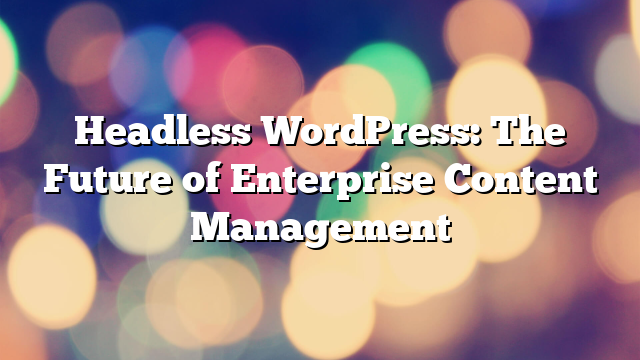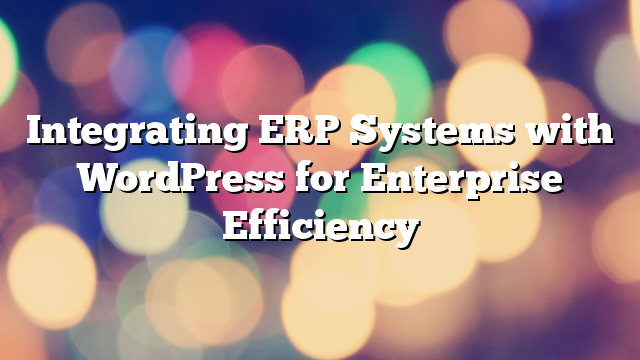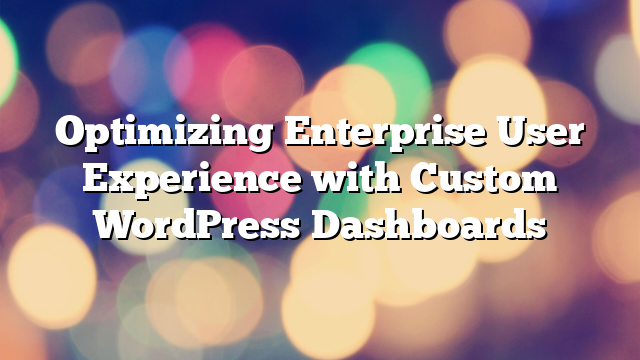Headless WordPress: The Future of Enterprise Content Management
24.10.2024

As enterprises increasingly seek flexibility, scalability, and enhanced performance in their digital platforms, Headless WordPress has emerged as a powerful solution for content management. Unlike traditional WordPress, a headless setup separates the back-end (where content is managed) from the front-end (where content is displayed), offering more freedom in how content is presented across multiple channels. This decoupling makes Headless WordPress an excellent option for enterprises looking to provide seamless user experiences across websites, mobile apps, and other digital platforms. In this article, we’ll dive into what Headless WordPress is, its benefits for enterprise use, and why it’s becoming the future of content management for large organizations.
What Is Headless WordPress?
Headless WordPress refers to a content management system (CMS) where the back-end (WordPress) is used solely for managing content, while the front-end is built with a separate framework, such as React, Next.js, or Vue.js. In this setup, WordPress serves as the ‘headless’ content repository, delivering data to the front-end via APIs like the REST API or GraphQL.
This approach gives developers the flexibility to create highly customized front-end experiences, independent of WordPress’s default themes and templates. Enterprises can leverage modern JavaScript frameworks to build faster, more responsive, and more dynamic web applications, all while managing content in the familiar WordPress dashboard.
Key Benefits of Headless WordPress for Enterprises
1. Omnichannel Content Delivery
One of the most significant advantages of Headless WordPress is its ability to deliver content across multiple platforms. In today’s digital landscape, enterprises need to ensure their content reaches customers on websites, mobile apps, digital kiosks, smart devices, and even virtual reality platforms. With a headless setup, content can be created once in WordPress and distributed via APIs to any device or channel.
This omnichannel content strategy is invaluable for enterprises that want to maintain a consistent brand experience while catering to the diverse ways customers interact with their digital properties.
2. Enhanced Website Performance
Traditional WordPress setups often struggle with performance issues when dealing with large-scale enterprise websites, particularly those with complex themes and heavy plugins. Headless WordPress improves performance by allowing enterprises to use modern front-end technologies like React or Next.js, which offer faster rendering and better load times.
Since the front-end is decoupled from the WordPress back-end, enterprises can take advantage of advanced performance optimizations such as static site generation (SSG) and server-side rendering (SSR), further enhancing speed and reducing server load.
3. Scalability
For enterprises, scalability is critical. As websites grow and traffic increases, traditional WordPress installations may face bottlenecks due to the limitations of the WordPress PHP-based architecture. Headless WordPress allows for better scalability by enabling the front-end to be deployed on a separate server or cloud platform, which can be scaled independently of the back-end.
Enterprises can also leverage CDNs (Content Delivery Networks) to distribute static content globally, reducing server load and ensuring that users around the world experience fast page load times, even during traffic surges.
4. Flexibility for Developers
With Headless WordPress, developers are not constrained by the limitations of WordPress themes or the PHP language. Instead, they can build fully custom front-ends using modern JavaScript frameworks, delivering unique user experiences tailored to the needs of the enterprise. This flexibility is especially useful for enterprises with complex, highly interactive websites or applications that need a custom touch.
Headless WordPress also enables developers to implement advanced features like dynamic content loading, complex animations, and real-time data updates, all of which can enhance the user experience.
5. Improved Security
By decoupling the front-end from the WordPress back-end, enterprises can enhance security. In a headless setup, the WordPress admin area is hidden from public view, reducing the risk of common vulnerabilities like brute force attacks or unauthorized access. The front-end interacts with the back-end only via secure APIs, providing an extra layer of protection.
Additionally, because the front-end is built separately, enterprises can implement their own security measures, such as firewalls, authentication layers, and content encryption, tailored to their specific needs.
Use Cases for Headless WordPress in Enterprises
1. Multi-Channel Content Distribution
Enterprises that need to distribute content across multiple platforms can benefit greatly from Headless WordPress. For example, a large retail company might want to deliver product information to its website, mobile app, and in-store digital kiosks, all from a single WordPress back-end. With a headless setup, this content can be distributed seamlessly across all channels, ensuring consistency and efficiency.
2. Custom Web Applications
Enterprises looking to create custom web applications with complex user interactions can leverage Headless WordPress to handle content management while building the front-end with JavaScript frameworks like React or Vue.js. This allows for the creation of highly dynamic and interactive web apps that are not constrained by the traditional WordPress front-end.
3. Enterprise Portals and Intranets
Many enterprises use WordPress to build internal portals or intranets for employee communication, document sharing, and collaboration. With Headless WordPress, these internal tools can be made faster, more user-friendly, and better integrated with other enterprise systems, such as CRM platforms or internal APIs, improving workflow and productivity.
Challenges of Implementing Headless WordPress
While Headless WordPress offers numerous advantages, there are also challenges that enterprises must consider before adopting it:
1. More Complex Development Process
Building a headless WordPress site requires separate development for the back-end (WordPress) and front-end (e.g., React, Vue.js). This separation can make the development process more complex and resource-intensive. Enterprises will need skilled developers familiar with both WordPress and the chosen front-end technology.
2. Increased Maintenance
Managing a headless setup often means maintaining two separate codebases — one for the back-end and one for the front-end. This can lead to increased maintenance efforts, particularly when updates or changes are required in one part of the system. Enterprises must be prepared for ongoing technical maintenance to keep both sides of the system running smoothly.
3. Dependency on APIs
Headless WordPress relies heavily on APIs to deliver content to the front-end. This dependency can introduce latency issues if APIs are not optimized properly. Enterprises must ensure that their APIs are fast, secure, and capable of handling the data demands of the front-end.
Conclusion
Headless WordPress offers enterprises a flexible, scalable, and performance-driven solution for managing content across multiple platforms. By decoupling the front-end and back-end, enterprises can build customized user experiences that meet the demands of modern digital audiences. However, the complexities of a headless architecture require careful planning and skilled development teams to ensure successful implementation.
If your enterprise is considering adopting Headless WordPress for content management, contact AllWebDev to learn how we can help you create a robust, scalable solution tailored to your business needs.



